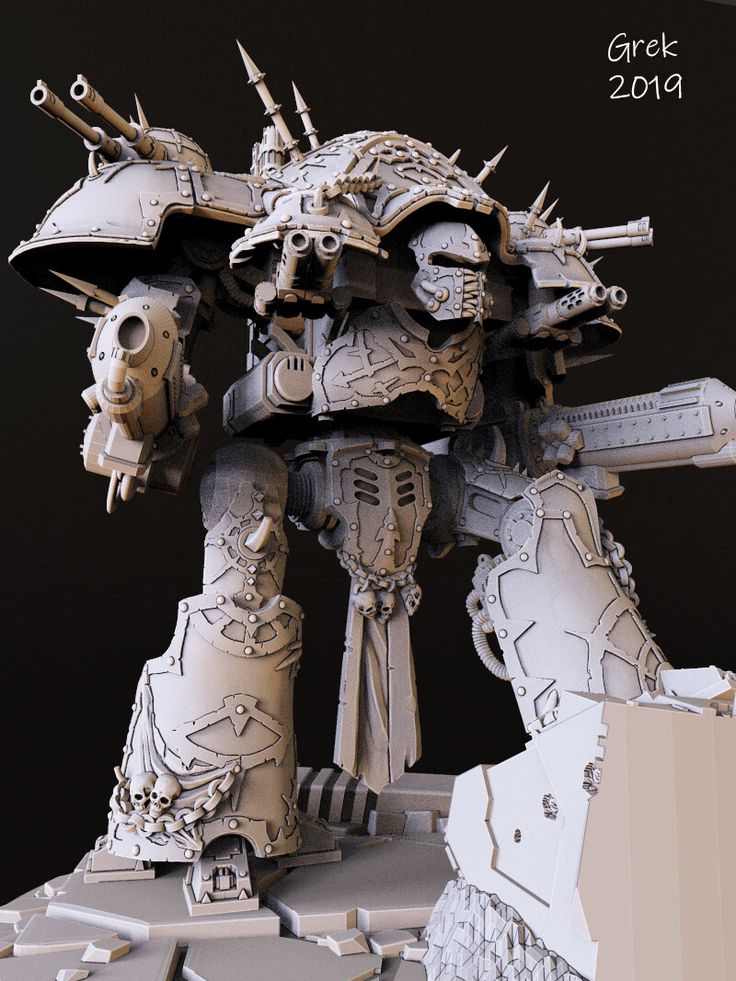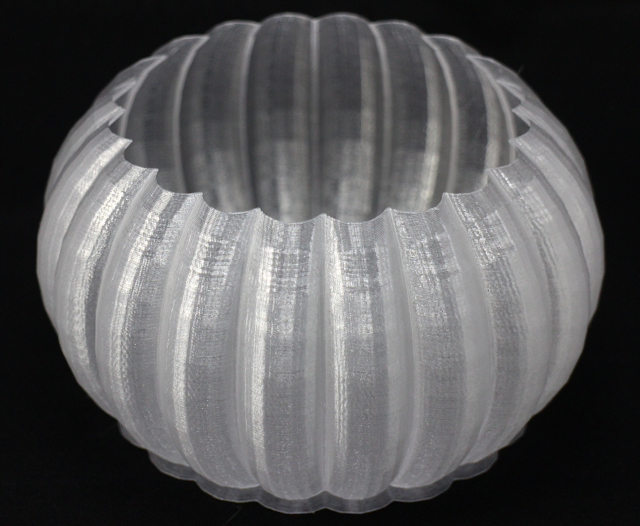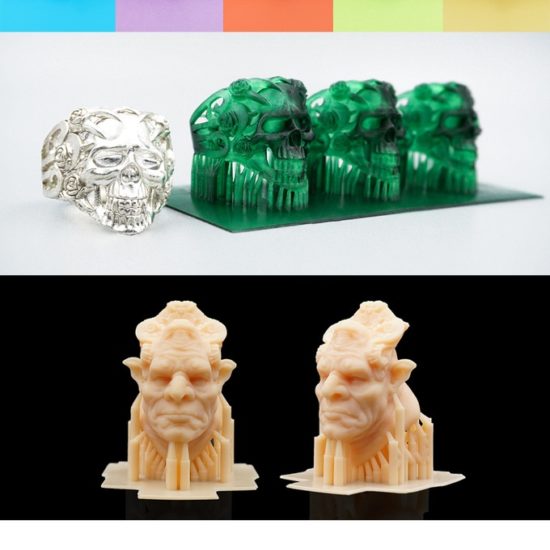Warhammer 3d printing lawsuit
Games Workshop Opens the War Against 3D Artists
report this ad
report this ad
It’s raining Cease & Desist letters as Games Workshop has been going after 3D artists en masse lately if the rumors are to be believed.
As some of you may have seen recently a prominent 3d Modeler was given a cease and desist letter from GW about one of their models and is vowing to dispute it. So it looks like the stage may be getting set for another showdown similar to the Chapterhouse Vs. Games Workshop case from 2013.
Games Workshop Opens the War Against 3D Artists
As it turns out it looks like a lot of artists also received similar notifications from GW lately in what many are calling a targeted campaign by them against 3d artists worldwide.
One Year Later, Pass or Fail: Vorte...
Please enable JavaScript
One Year Later, Pass or Fail: Vortex Mixer Shaker For Miniatures & Model Paints
That got us thinking about how the copyright laws really have changed and what’s actually infringement and what’s not. Recently, there have been some changes in the laws, and a few big lawsuits from large companies have also changed how issues like these are handled now.
Disputes with miniatures are harder than most objects. Mainly because they are all so complex and based on things that have “already happened.”
How do you say you came up with a space robot? How do you say someone copied your space robot, and it’s too similar to theirs? Well, that’s what we’re going to try and get to the bottom of today for you!
We’ve included some videos as well because sometimes it is better to hear things from the experts themselves!
With 3D printing growing every day in the tabletop gaming space, its laws are evolving to protect products and brands, but those same laws do leave room for the big guys to push around the smaller ones a bit. Let’s get into it!
Copyright Issues in the Age of 3D Printed Models
Duncan Shadow is the creator currently under the microscope.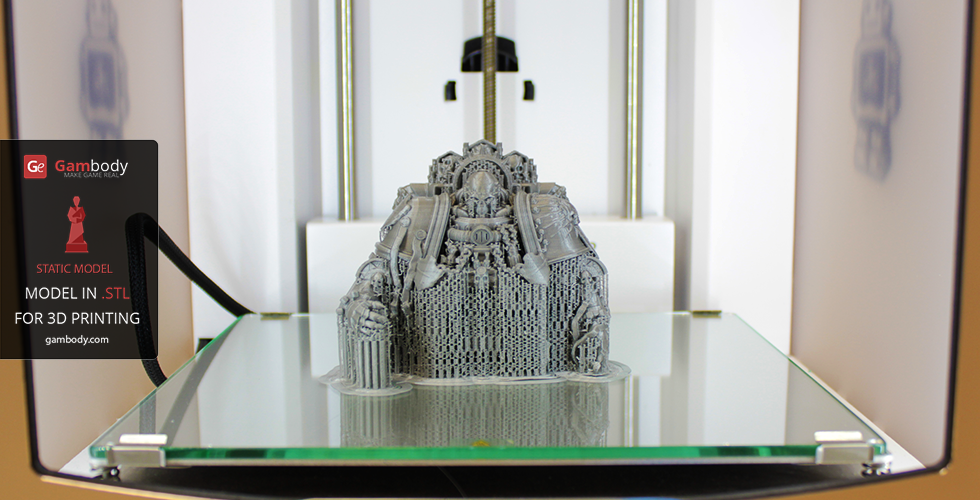 His recent public posts say that GW contacted MMF to take down the model above. They say it is “identical” to one of their miniatures. Obviously, it has differences, as well as similarities to the Eldar Revenant Titan, and in his opinion does not contain a trademarked symbol.
His recent public posts say that GW contacted MMF to take down the model above. They say it is “identical” to one of their miniatures. Obviously, it has differences, as well as similarities to the Eldar Revenant Titan, and in his opinion does not contain a trademarked symbol.
Here’s a pic of his full model:
Here is a pic of the Forge World Eldar Revenant Titan:
Does this mean GW is starting to crack down hard on creators? Or do they just send out as many letters as they can since they are fairly cheap and the majority of people will just take the sculpts down? It’s hard to tell, but let’s look at a recent copyright case and what some experts have to say about the current state of copyright laws.
The Adidas Case
A trademark is about protecting from customer confusion. In a recent case, (he talks about it at the 2:34 mark) Forever21 was sued by Adidas by simply having three stripes on some shorts, (like something you would expect to see on a pair of Adidas shorts).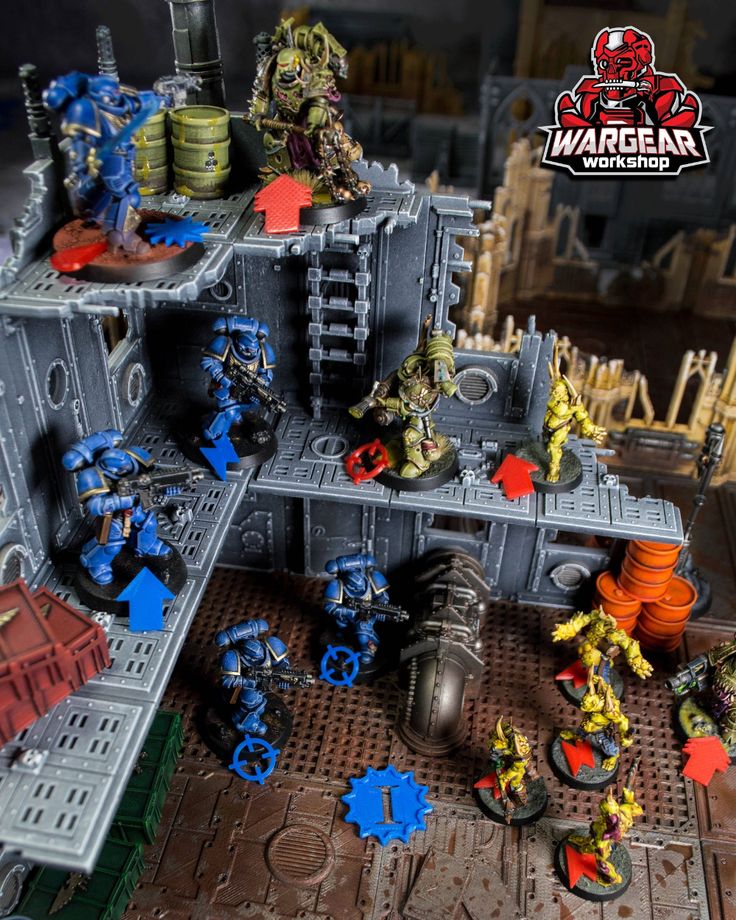
Seems quite crazy, however, Forever21 settled out of court as many experts believe they would have lost this case. So shorts with 3 stripes on them is sometimes all it could take for a judge to enforce a trademark.
When you look at Adidas, that is their main symbol. With GW, however, the question is how can they really say every miniature, devoid of symbols, is infringing? Still, if it is deemed close enough to cause confusion among customers, it’s possible that based on this example, GW would win the battle if it went to court.
It’s all if they can prove it is confusing their customer base to think it could be their model. Especially since 3D artists are working in the same medium. If you transferred a design to a shirt or even a poster/ patch/pin etc, instead of miniature, it would, perhaps, be harder to prove infringement.
According to the US Copyright office:
Works are original when they are independently created by a human author and have a minimal degree of creativity.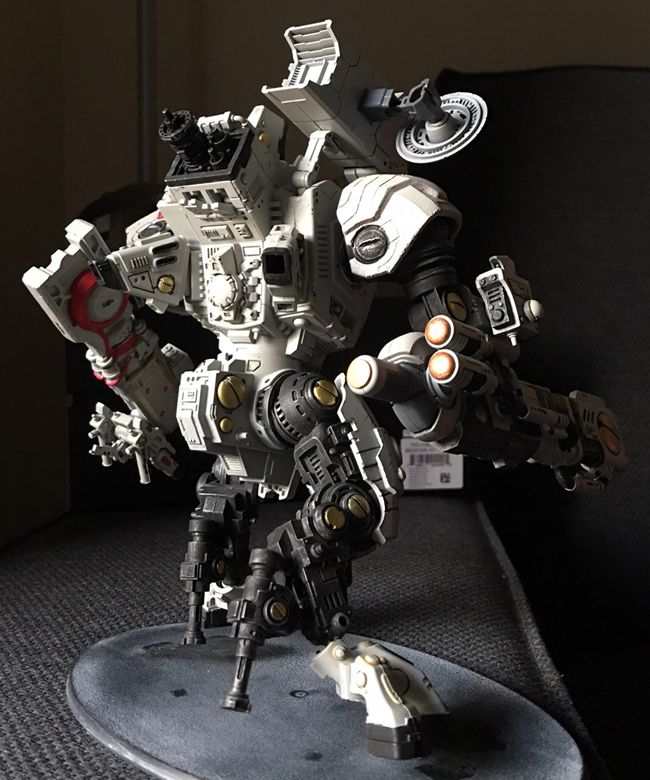 Independent creation simply means that you create it yourself, without copying.
Independent creation simply means that you create it yourself, without copying.
So a defense against “copying” would be to show that you (the artist) created something completely independent.
Which has always been a sort of gray area in the 3D model space where some artists create 1:1 ports of popular GW models, some like Duncan seem to be inspired by them, while other artists go even further create something completely different but still 100% usable on the tabletop by hobbyists.
For example, if you did a scene for scene re-shoot of Star Wars but used glowing katanas instead of lightsabers and called it “space ninjas” that would likely be considered copyright infringement.
If you re-shot it as “Star Whores” and made it into a porno that only loosely followed the script, that would probably fall under the “parody” exception to copyright. (probably…)
The other item Duncan mentioned, trademarks, is a little different. Branding is related to trademark law, which is somewhat different.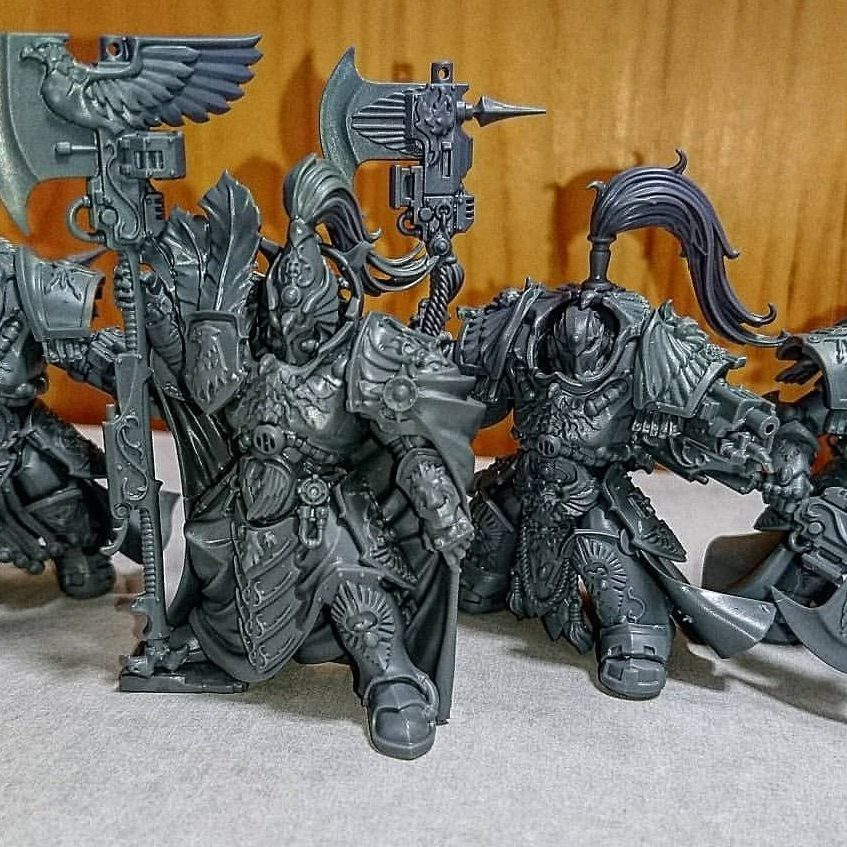 The double-headed Aquila, for instance, is probably trademarked, so that has stronger protection since that’s “the brand” and not just a particular design.
The double-headed Aquila, for instance, is probably trademarked, so that has stronger protection since that’s “the brand” and not just a particular design.
What This Means for Platforms
In a very recent law, which was made to protect places like YouTube from Copyright issues, Section 230 of the Communications Decency Act protects platforms from what its users do.
So part of the CDA “safe harbor” provisions is that the service provider (MMF in this case) is protected from liability if they take potentially “bad” things down once they’re notified of it. I.E. this design, which it seems that Duncan may dispute with GW.
In the case above, My Mini Factory is most likely protected from any actions that GW is taking against Duncan. So the good news is, places like MMF (or Cults, etc) will generally be affected little by claims such as these as long as they themselves comply with any requests like the one they received by GW.
In summary, seller platforms cannot really be attacked directly, as long as they don’t create the content.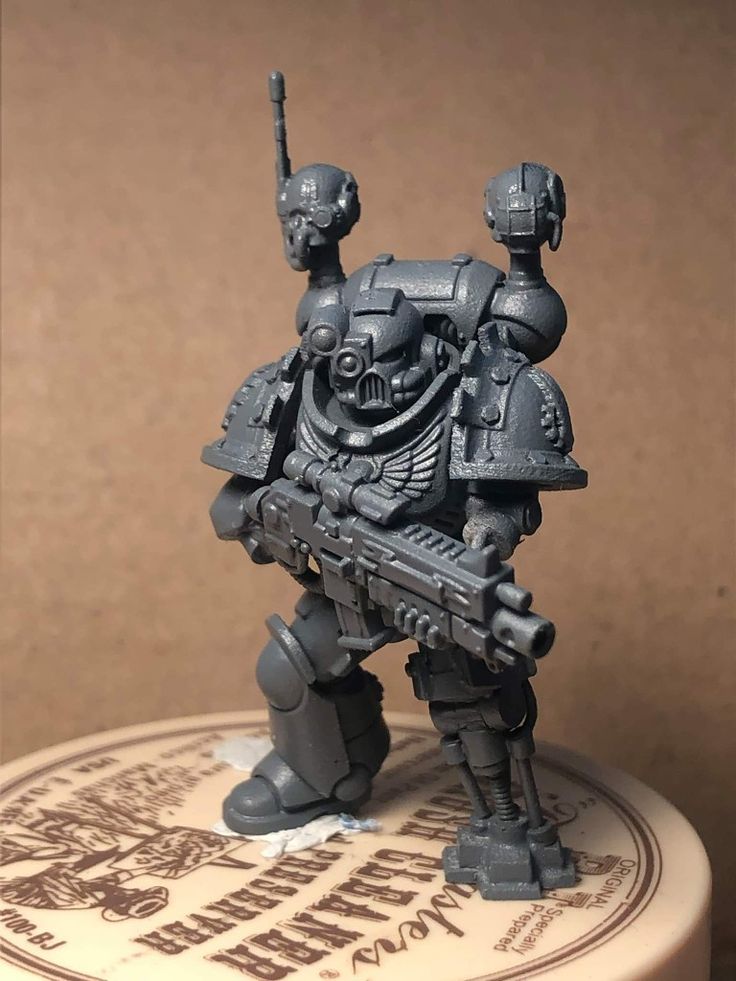 But, and a big but, they have to take down the items once notified. So if they do not take down the models after notification, then they could get into trouble as well.
But, and a big but, they have to take down the items once notified. So if they do not take down the models after notification, then they could get into trouble as well.
Why This is All Super Relevant Now
Congress recently passed the 2021 Appropriations Act, which according to Norton Rose Fulbright makes it easier for any brand, large or small to take action against any they believe is “infringing” on their works.
For companies, the 2020 Trademark Act:
- Improves the ability and consistency for obtaining injunctions against infringers by restoring and codifying the rebuttable presumption of irreparable harm where a likelihood of confusion is shown;
Since the act passed, it is overall good for smaller content creators but does leave room for the big guys to hassle them. When looking at something like the Adidas case, it may not look too good for some artists.
That is because with some miniatures, regardless of the use of a trademark or not, it may not be that hard for someone like GW to prove that something could very well create confusion among customers as to where it comes from.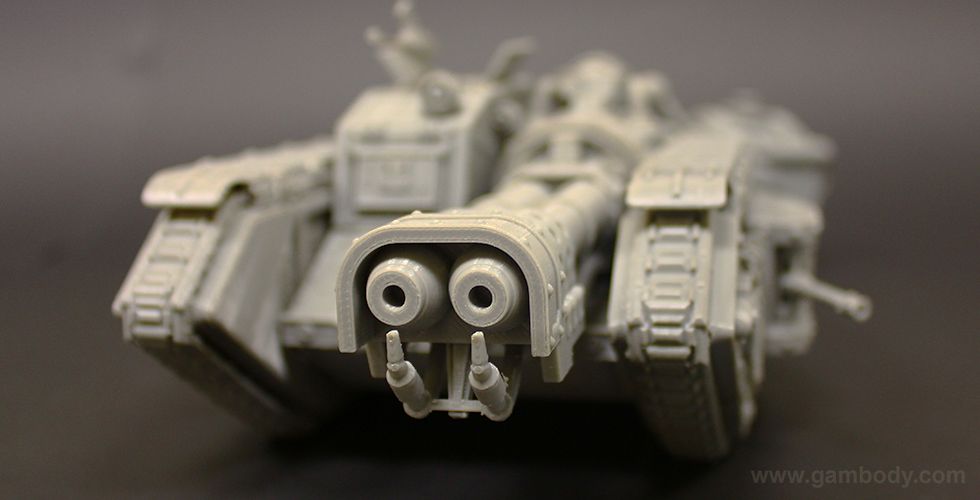
But again, it all comes down to the judge if it is too derivative or totally of an artist’s own actual creation. Even experts like Legal Eagle are not 100% on anything at this point since the new act has become law.
Models are Hard
Miniature disputes are hard, as it’s the same medium as GW’s core business. If their legal team can establish that an artist’s customers are their customers, and the sale of those models hurts them and their brand just like the Adidas example above- they may have a case.
We’ll have to see if GW cracks down harder with the new laws or if the little guys can win some because it honestly can go either way depending on the “art,” medium, and judge.
Either way, if an artist gets a letter to cease production, oftentimes, it’s just easier to comply because the court fees can be astronomical at that scale, and a long-drawn-out court battle against a giant company is never easy.
So what does this mean for 3D artists going forward?
Well, the only way to be totally safe would be to create something that potentially could not be mistaken for a Games Workshop miniature and still be super dope to the plaint and play with on the tabletop (like this DemonSlayer-Knight).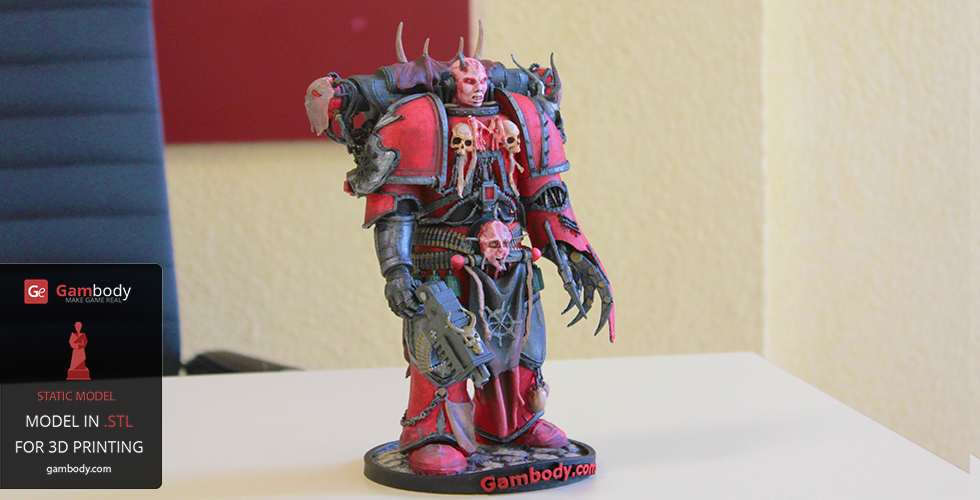
Even Games Workshop is Using 3D Printing for Faster Minis
You may not know this, but GW has been using 3D printing to produce most of the painted models they have been showcasing for at least 7 years. These models can be seen everywhere, from previews to digital files on Warhammer Community and even in the supplement books themselves.
The reason? It is so much easier just to print out a file instead of waiting for all the plastic to get in. With all the minis getting such great paint jobs, they need to get the miniatures to the painters early to get them ready for previews, etc. So, they just print a few out for them, and the perpetual cycle of GW releases continues.
But, if they can print out 3d minis, they also have the files hanging around somewhere.
Turns out they definitely have some 3D model files archived in their computers that could, at some point in the future, be transformed into sellable downloadable products. Obviously, this isn’t happening soon, because they would first have to find a way to control how the files were used and distributed.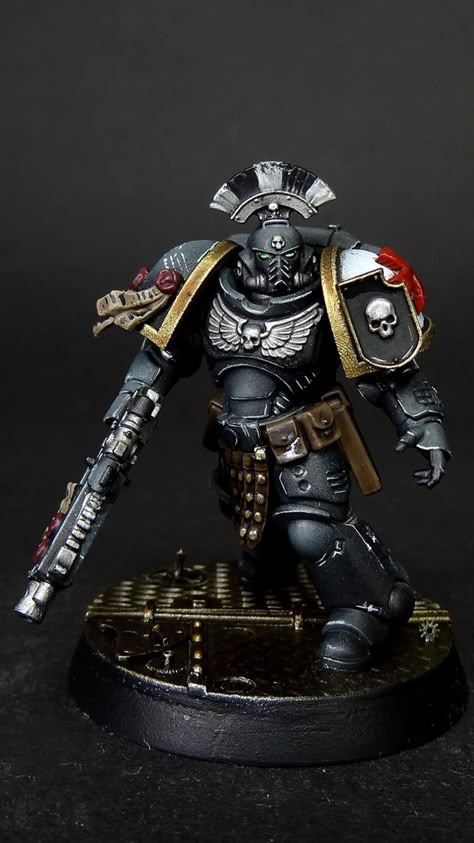
Check out some of the stuff that GW looks to have 3D printed in the past, present, and future…
The First 3D Printed Model We Noticed: Taurox Prime
Back in 2014, the Taurox Prime was previewed and released. We think this is the first time we saw GW use 3D printing for their finished model prototypes. You can tell by clear issues on the model that is still posted on GW’s Webstore. The quality of the model in the picture appears to be much less than what their plastic injected models can produce.
First off, you can tell that the tracks are slanted at something like a 15-degree angle to the right. On top of that, the autocannons on the sides look to fit a little wonky. You can see a clear gap on the right gun even.
At the front of the vehicle, you can still see the tracks angled completely off from the rest of the chassis and the assault cannons have something in some of the barrels.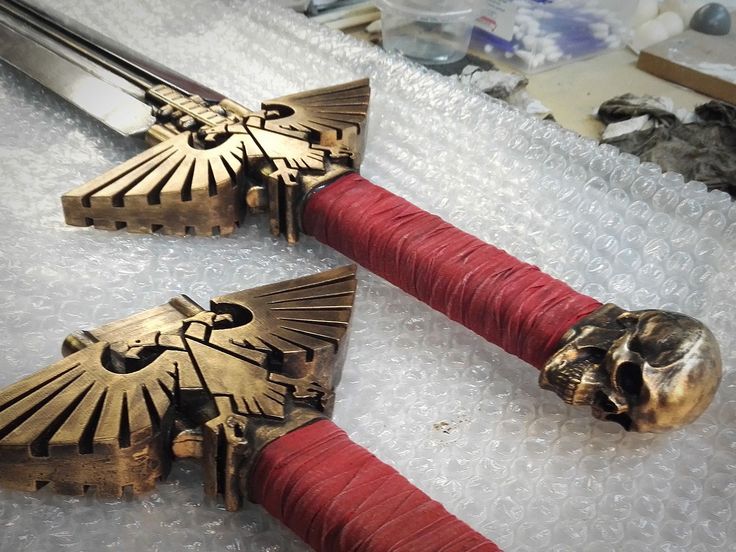
Finally, the track guards are bent and malformed. You can see a clear bowing of the back guard compared to the front. Now keep in mind, that they never sold a model like this. This was just used to preview their product ahead of time.
3D Printed Minis We’ve Spotted
Picture from Garro at GSC Showcase From Warhammer New Years Open Day
Looking at the Locus in a case from an event preview, you can see striations at the top of its hood. While this could be just some weird kind of drybrush, it is a bit odd that the effect doesn’t appear in Warhammer Community’s preview online?
Looking at GSC’s official picture of the Locus, it looks like the striations from the top of the hood are gone. Could this be the fact that the pictures have been “cleaned up” with some simple editing? Some striations still appear on the robe next to his staff which is indicative of 3D printing, however, they are a lot more subtle than what was spotted in the display case.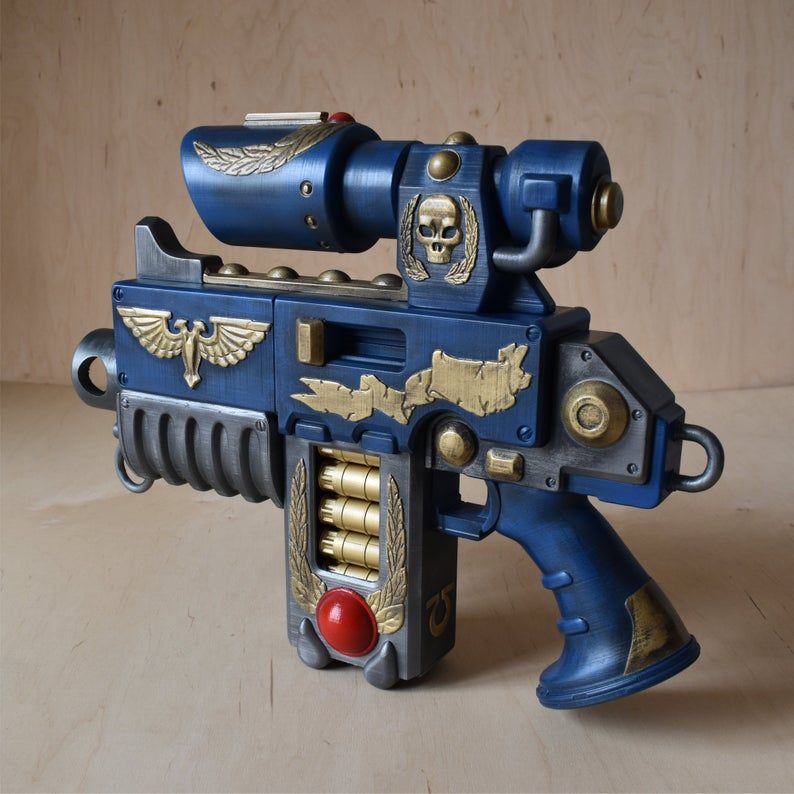 Better 3D printing technology and painting techniques help to keep the printing lines to a minimum.
Better 3D printing technology and painting techniques help to keep the printing lines to a minimum.
This is definitely a lot better than the Taurox from 2014.
Next, the new exclusive Sister of Battle Sister Novena also appears to have some of the same tell-tale 3D printer striations that indicate the painted model was also a 3D print.
And lastly, looking at the newly previewed Iron Hands character, you can see striations all over his weapon.
First, at the top of his axe where the flat area behind the blade is as well as the vice-grip-looking counterweight on the other end. Looking at the bottom of the weapon, the battery pack that makes the thing a power weapon is also showing some striations on its side.
The Latest Minis We’ve Spotted
You can see some of the lines on this look very 3D printed, but with the Ad Mech stuff still a while away, it only makes sense they would just print a few out instead of making a bunch to paint up.
The mold lines on this are very strong in the highest points compared to the rest of the mini.
Lelith was one of the most obvious of newer releases with the random hard mold lines, some things off-kilter, and the issues in the dagger. This one used for the preview was definitely 3D printed.
Why 3D Printing Makes Sense
Without going too far into detail, 3D printing makes sense because it’s just faster for rapid prototyping. Looking at GW’s standpoint, they have to get their models ready ahead of time so they can have pictures for their codex, box kits, previews, etc. It takes a fraction of the time printing off a 3D sculpt in-house vs having materials sent off for plastic injection.
It seems like GW is printing off a “master-prototype” model that they use in all of their promotions while the main product is getting amassed.
Obviously by the time these products make it to market they are the actual material(s) they are supposed to be and do not have the 3D print marks on them (well except Forge World, which a whole separate post altogether).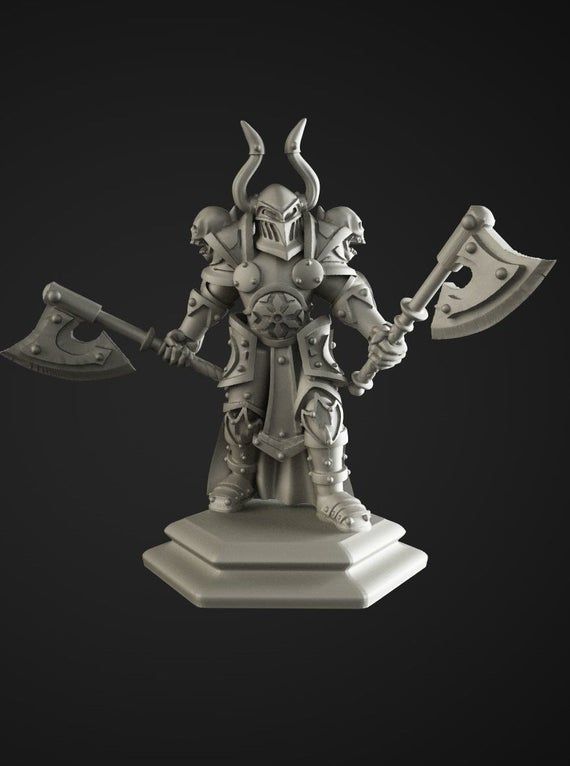
Do you think Games Workshop has started to crack down on the 3D printed miniatures space?
Let us know in the comments of our Facebook Hobby Group, and make sure you enter the latest monthly giveaway for FREE today! You can also support us on Patreon and get ad-free access to the site, plus a ton of minis that helps support some of the best creators out there
If you buy something from a link on our site, we may earn a commision. See our ethics statement.
Virginia Restless, Miniature Painter & Cat Dad. I blame LEGOs. There was something about those little-colored blocks that started it all... Twitter @catdaddymbg
3D Printing and Competitive Play : WarhammerCompetitive
Hello internet! I hope you are all conquering your enemies out there. I know that it has been some time since I have posted a battle report.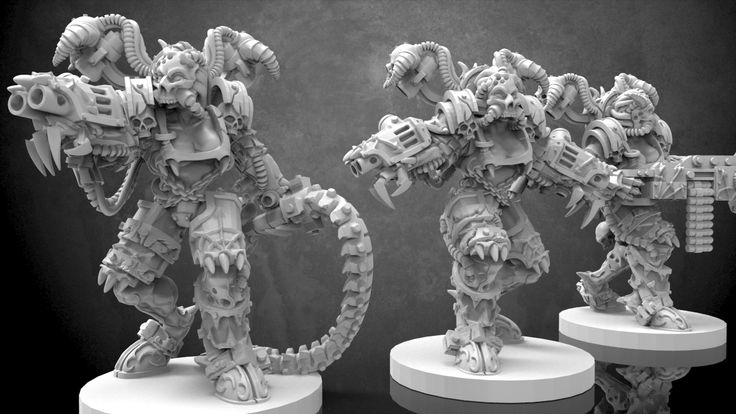 This article will be about what I have been up to and the changes that I have seen in my competitive group.
This article will be about what I have been up to and the changes that I have seen in my competitive group.
My own play group is comprised of players that like to play with the top armies. Because of that I have barely gotten a game in over the last six months that wasn't against drukhari or ad mech, as those two armies are (still!) seriously overtuned. In my experience the games tend to be kind of boring, are often lopsided, and don't make for good battle report content because too often the game is over before it starts (depending on terrain and first turn). So the competitive games I've been playing haven't been very interesting and so I just haven't been interested in writing up a report.
Orcs: One exception to the endless slog of dark eldar and admech is that I did get a chance to play about a half dozen games against the new orc codex. I've played against a variety of builds (more on that at the end) and overall I don't think this is a codex that will win you games on its own.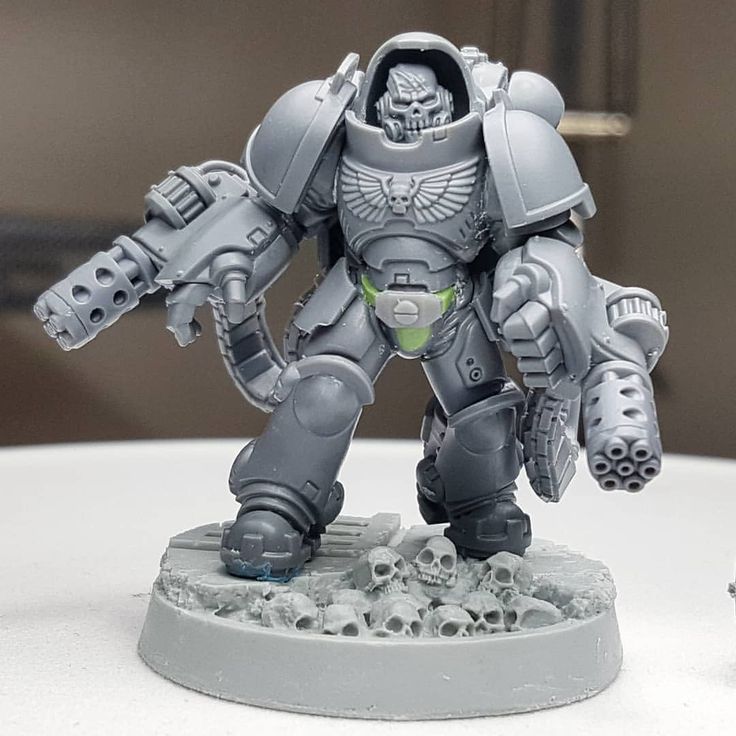 The cavalry units and things like the kill rig look good on paper, but can't move through terrain and can be very easy to roadblock as they end up needing to go through specific choke points. The infantry overall is too squishy. This leaves the buggies and to some extent the flyers as the good units out of which to comprise an army to win. The orc games were either blow out losses (when they focused on infantry or cavalry) or blow out wins (when all they brought was buggies). I'll be interested to see if anyone but the few best orc players can make the codex work outside of the buggies.
The cavalry units and things like the kill rig look good on paper, but can't move through terrain and can be very easy to roadblock as they end up needing to go through specific choke points. The infantry overall is too squishy. This leaves the buggies and to some extent the flyers as the good units out of which to comprise an army to win. The orc games were either blow out losses (when they focused on infantry or cavalry) or blow out wins (when all they brought was buggies). I'll be interested to see if anyone but the few best orc players can make the codex work outside of the buggies.
It all started with Drukhari....
I have been playing GW games for 31 years. Over the course of that time I have seen very different approaches to what models could be used. Early on in the games conversions and third party miniatures were outright encouraged. Making the coolest looking model possible was a huge part of the hobby through 4th edition. Cool conversions started to die in 5th edition, as 5th edition introduced true line of sight.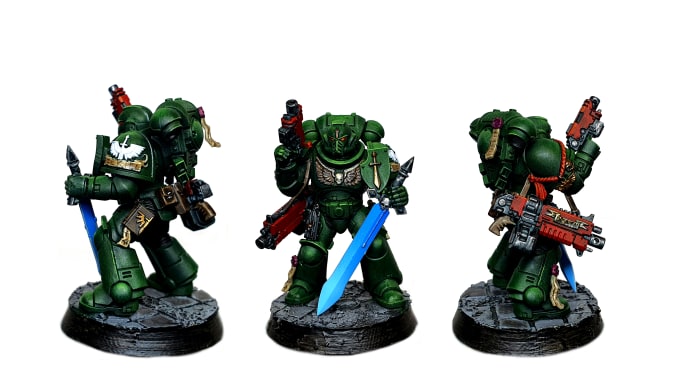 True line of sight meant two things.... 1st people stopped building cool looking tables, especially tables that looked like historical battlefields, and started building tables with (increasingly) massive walls to hide things for pure game purposes. The second thing true line of sight did was make it so that big, awesome looking models were a liability as they could be seen. All of a sudden the concept of "modeling for advantage" became a thing. You no longer modeled for coolness factor, and the game in my opinion has really lost something from 5th edition on as a consequence of TLOS. Today's game rules might be better than it was in say 2nd through 4th edition, but the armies and especially the battlefields of those early days looked significantly better and more realistic.
True line of sight meant two things.... 1st people stopped building cool looking tables, especially tables that looked like historical battlefields, and started building tables with (increasingly) massive walls to hide things for pure game purposes. The second thing true line of sight did was make it so that big, awesome looking models were a liability as they could be seen. All of a sudden the concept of "modeling for advantage" became a thing. You no longer modeled for coolness factor, and the game in my opinion has really lost something from 5th edition on as a consequence of TLOS. Today's game rules might be better than it was in say 2nd through 4th edition, but the armies and especially the battlefields of those early days looked significantly better and more realistic.
Obviously after the Chapterhouse lawsuit "no models, no rules" became the standard. Also, in the modern era GW is not open at all to third party miniatures, and sometimes even discourages conversions of its own models (for instance by restricting weapon loadouts in the latest edition).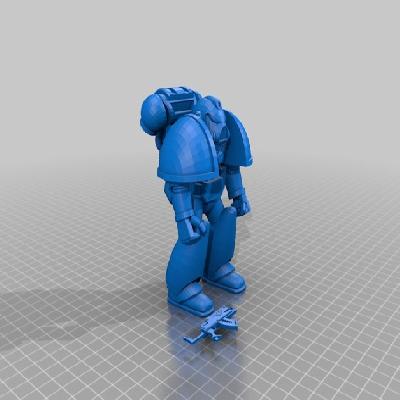 And new on the scene is 3D printing.
And new on the scene is 3D printing.
So in my particular play group 3D printing was typically considered a faux pas. The one exception to this was expensive forgeworld kits. The deal here was that it was often cheaper and better quality to buy forgeworld from recasters, and so even here 3D printing was not super common.
This reluctance, or social stigma, to 3D printed models has completely changed this year.
It all started with Drukhari. When the book came out it was obviously way too powerful with even a casual read. However due to a variety of factors most of the army was not available to be purchased at the time the book was released. So what was someone to do if they needed a lot of models to play with the most broken rules?
The answer was 3D printing, at least for a large portion of my play group. In particular early on it was grotesques and wrack squads. However I know of at least one player who has done quite well in mostly midwest tournaments where the entire army was 3D printed except for the Raiders.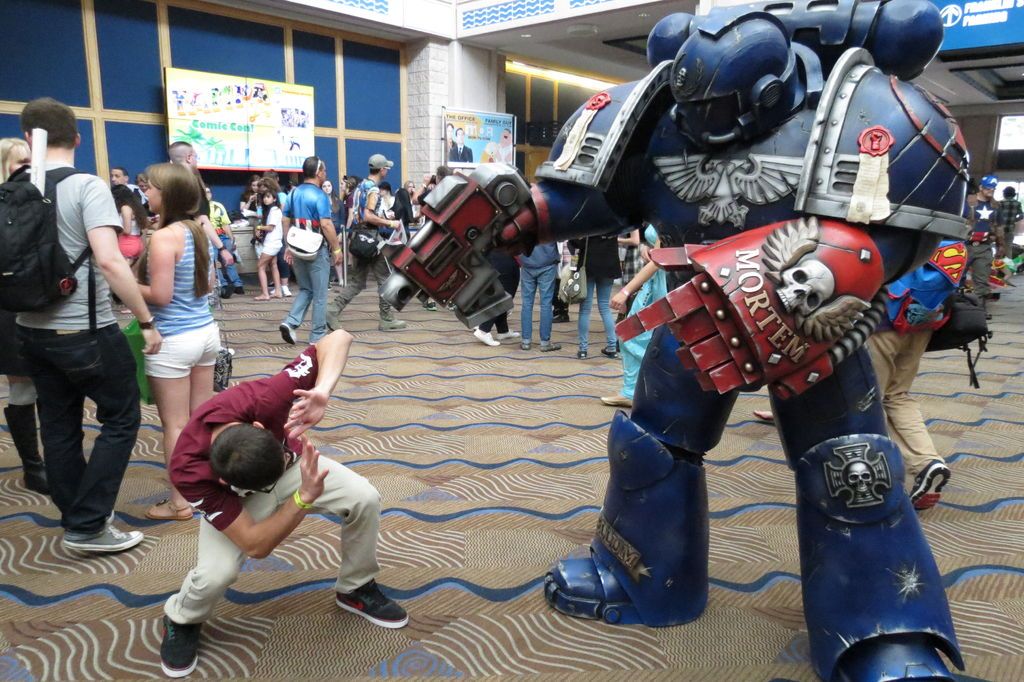 Because I started to face 3D printed armies all of the time I got a chance to inspect them.
Because I started to face 3D printed armies all of the time I got a chance to inspect them.
Quality: In my opinion 3D printing is almost there. The wrack squads I could tell the difference between plastics and printed models because the printed models have slightly softer edges. This can be hidden to an extent with paint job, but if you put them side by side you can still always tell in my opinion.
The same was true but for the opposite reason on the grotesques. Printed grotesques hold the detail better than finecast, and simply look better. When painted, 3D printed grotesques look significantly better than the finecast genuine article, and are much cheaper to boot. The biggest way to tell the difference between the two is when you pick them up the printed grotesques are quite a bit heavier than the finecast ones (and probably look better at a glance). I find this quite sad, as it sort of means that GW could offer a better product if it simply 3D printed its own grotesques and sold those instead of the finecast.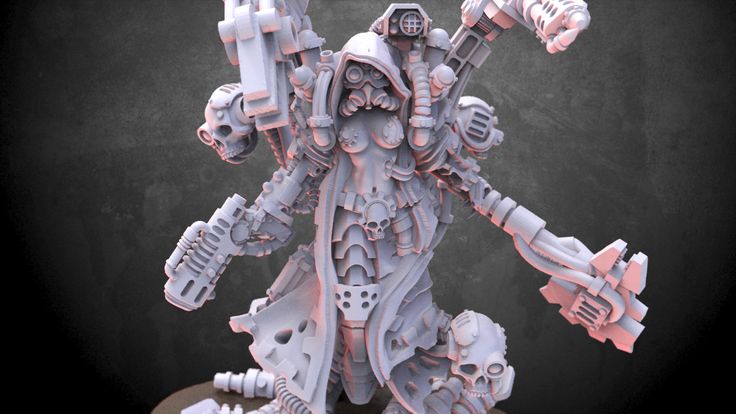
So Drukhari was the hot stuff for months, stayed sold out, and slowly the Drukhari players, if they didn't print them themselves at least bought a number of their models from people who were printing. It was simply a matter of supply. However, this reality started to break the taboo.
Months passed and we got a second lolwhat codex. Admech models are in general very spikey and spindley, and are not great options to print. That said, here again I saw the next evolution of the 3D printing trend. Lots of my friends again jumped on this bandwagon for having clearly superior rules to other 9th edition books. Here the printed model of choice was the hounds. The hounds are lumpier and can still look good when printed. What was different here was that the model was NOT always sold out. It was hard to get for weeks here and there, sure. But while for Drukhari it was a matter of no supply, for admech suddenly it was about price. 3 hounds was simply too expensive, and now that 3d printing was becoming accepted (in the group) and so people would print just that portion of the army.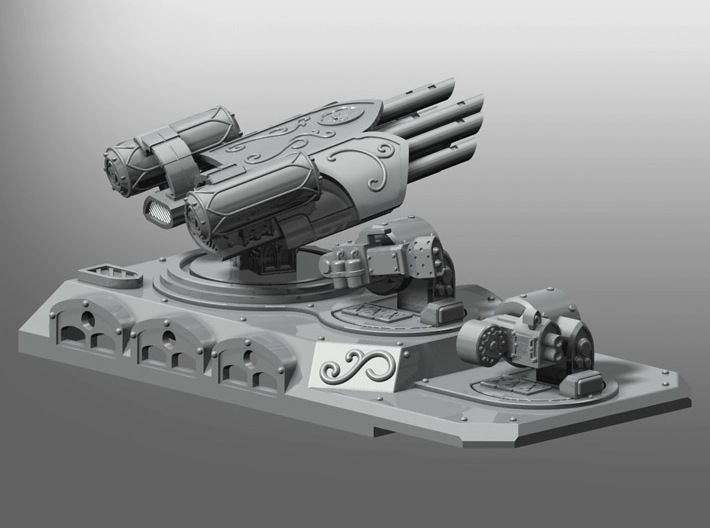
Volkite Culverins: The straw that broke the camels back for the rest of the group was the Volkite Contemptor. It is the opinion of many that this is the single best unit in multiple codexes and is simply underpriced and efficient for the number of shots and mortal wound output. But this is another expensive forgeworld option that has been impossible to get for some time. Due to the perception that these are necessary for competitive play because they are so good for their points, the last few people decided to either print and/or buy printed volkites so that they could go to tournaments.
Keep in mind, this all happened in about 6 months. It went from being taboo to 3d print, to being considered necessary as part of competitive play to 3d print. The change has been dizzying.
Are 3D printed models OK? This perhaps is the same question as conversions. As near as I can tell it is still the official rule at most tournaments that 3d printed models are banned. But who checks? How can you tell? I can tell because I've had the chance to inspect models pre and post paint from my friends. I know people that have gone to large tournaments with mostly 3d printed models, and have never been asked about their models.
But who checks? How can you tell? I can tell because I've had the chance to inspect models pre and post paint from my friends. I know people that have gone to large tournaments with mostly 3d printed models, and have never been asked about their models.
As a long time GW fan I don't know that this makes me very happy, but at this point it seems like the inevitable outcome. I don't know that you can put this horse back in the barn. A combination of overpowered rules combined with supply shortages and a new technology seem to have changed the players relationship with models forever. Right now, GW is sold out, so they are not losing any sales TODAY. However, I wonder about the long term impact of this change.
And this brings me back to playing against Orcs. So, again, my group played a lot out of the codex using proxies. The conclusion, the book is pretty well balanced (read not good enough to win for you) outside of the buggies. And what do you know, I just learned that one of my friends has 3D printed an entire orc list, made mostly of 18 buggies that are hard to get.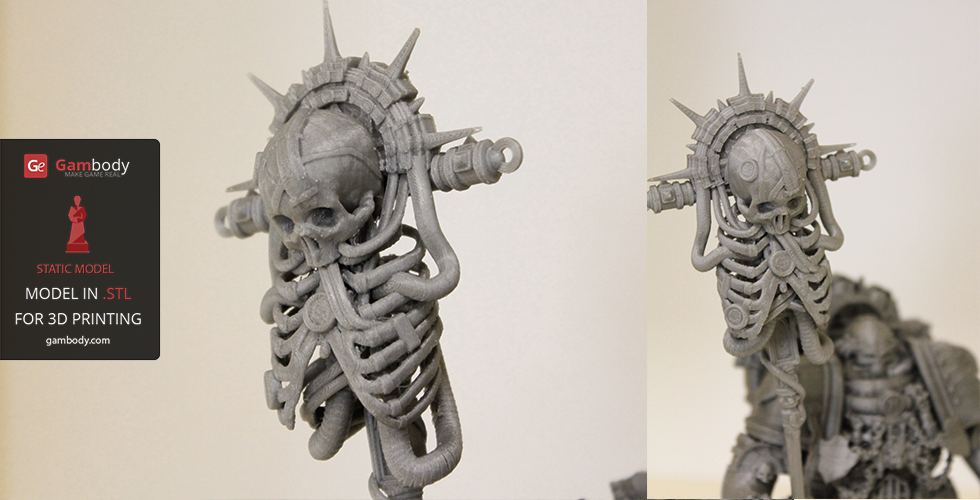
So, informally, I know in my group that 3D printing is now seen as the way for competitive play. I am curious if other groups are seeing the same things. For the TOs out there, do you plan on enforcing a no 3D printed models at any tournaments? How would you even check? Is disallowing 3D printed models just making 40k play to win? I am very curious on thoughts overall.
Thanks for reading. Good luck out there!
Appendix:
Links to my previous battle reports and articles, if so inclined.
Initial 9th Edition and Tyranids Analysis:
https://www.reddit.com/r/WarhammerCompetitive/comments/ike5jx/9th_edition_and_tyranids_analysis/
Starting Tyranids and Nov 2020 Tyranids Army Analysis:
https://www.reddit.com/r/WarhammerCompetitive/comments/k17xgn/starting_tyranids_and_nov_2020_tyranids_army/
Battle Reports
Tyranids vs Custodes:
https://www.reddit.com/r/Tyranids/comments/isi6as/tyranids_vs_custodes_9th_edition_battle_report/
Tyranids vs Iron Hands:
https://www.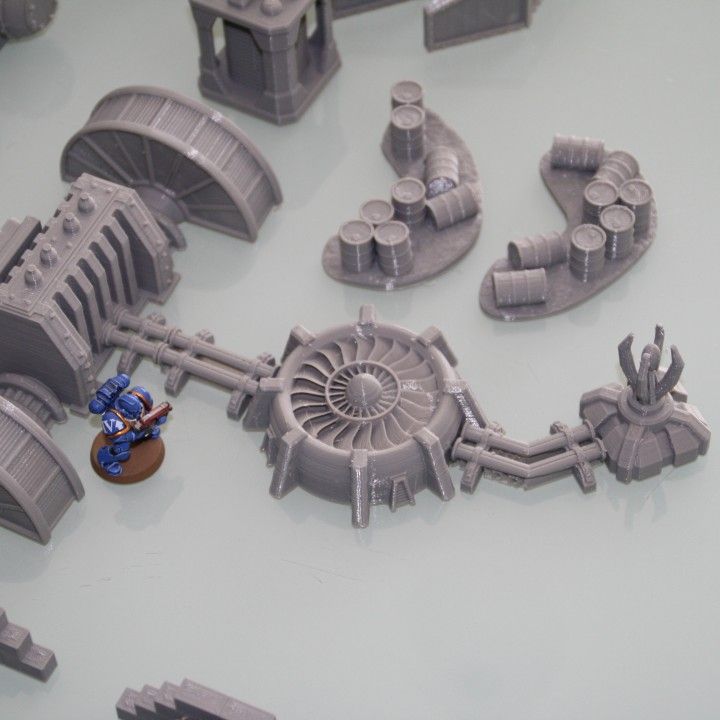 reddit.com/r/Tyranids/comments/ixfhri/tyranids_vs_iron_hands_9th_edition_battle_report/
reddit.com/r/Tyranids/comments/ixfhri/tyranids_vs_iron_hands_9th_edition_battle_report/
Tyranids vs Knights and Admech:
https://www.reddit.com/r/Tyranids/comments/iztbu8/tyranids_vs_knights_and_admech_9th_edition_battle/
Tyranids vs Daemons and Death Guard:
https://www.reddit.com/r/Tyranids/comments/j2qjxp/tyranids_vs_daemons_and_death_guard_9th_edition/
Tyranids vs White Scars:
https://www.reddit.com/r/Tyranids/comments/jbdgkx/tyranids_vs_new_codex_white_scars_9th_edition/
Tyranids vs New Death Guard:
https://www.reddit.com/r/Tyranids/comments/m1udem/tyranids_vs_new_death_guard_9th_edition_battle/
REMATCH - Tyranids vs New Death Guard:
https://www.reddit.com/r/Tyranids/comments/mdf12m/tyranids_vs_new_death_guard_rematch_9th_edition/
FINAL SHOWDOWN - Tyranids vs New Death Guard:
https://www.reddit.com/r/Tyranids/comments/mhnnib/final_showdown_tyranids_vs_death_guard_2000_pt/
Tyranids & GSC vs Necrons:
https://www.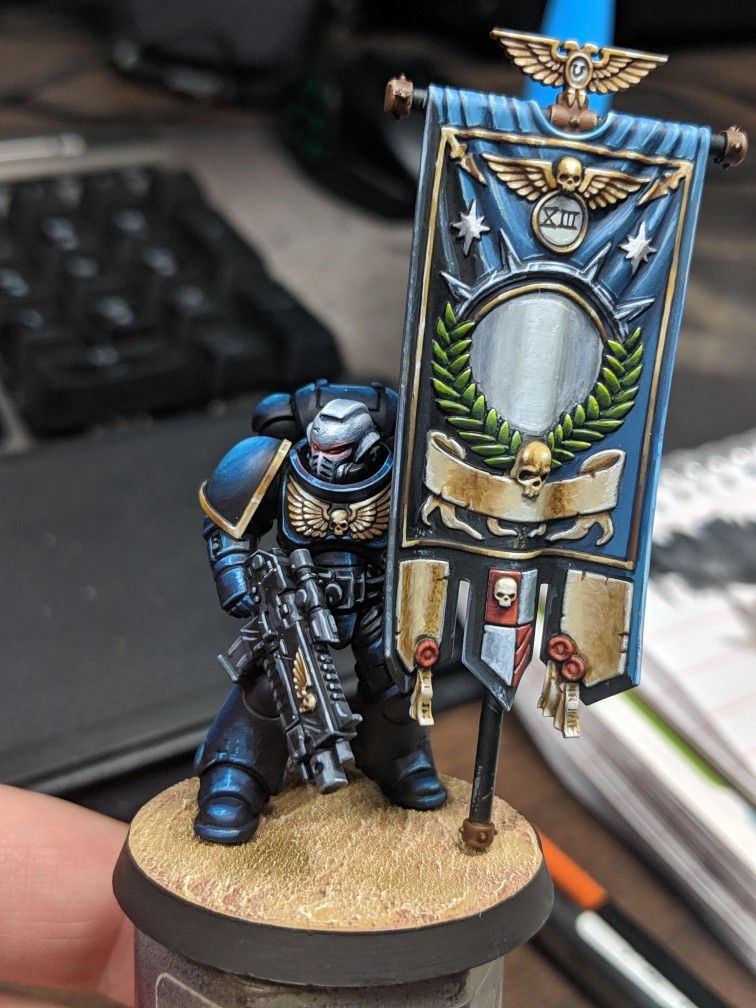 reddit.com/r/Tyranids/comments/mladkr/tyranids_gsc_vs_necrons_2000_pt_battle_report/
reddit.com/r/Tyranids/comments/mladkr/tyranids_gsc_vs_necrons_2000_pt_battle_report/
Tyrainds vs NEW Drukhari:
https://www.reddit.com/r/Tyranids/comments/mwdqe5/tyranids_vs_new_drukhari_2000pt_written_battle/
Tyranids go to an RTT:
https://www.reddit.com/r/WarhammerCompetitive/comments/jnqwsx/tyranids_go_to_a_rtt_3_written_battle_reports/
RTT Round 1 vs Custodes:
https://www.reddit.com/r/Tyranids/comments/jnqcma/rtt_round_1_battle_report_tyranids_vs_custodes/
RTT Round 2 vs Creations of Bile
https://www.reddit.com/r/Tyranids/comments/jnqkhs/rtt_round_2_battle_report_tyranids_vs_creations/
RTT Round 3 vs Black Legion
https://www.reddit.com/r/Tyranids/comments/jnqt4h/rtt_round_3_battle_report_tyranids_vs_black/
The Masters Movement, IP Litigation and Law Reform
October 2019
Author: ), Brisbane, Australia
3D printing is an industry based on the principle of additive manufacturing (as opposed to the subtractive manufacturing principle that underlies the traditional manufacturing industry).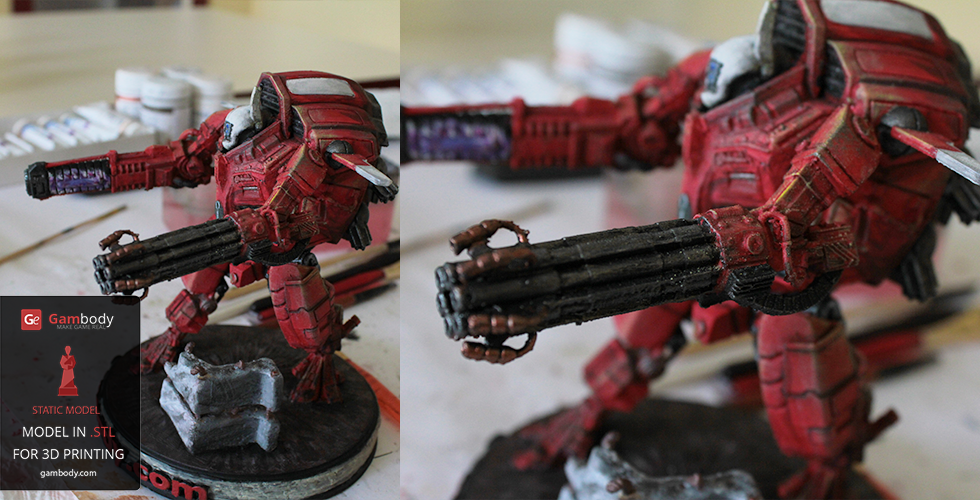 3D printing is also associated with the Craftsmen Movement, a social movement whose main idea is to develop designs for various products and share them.
3D printing is also associated with the Craftsmen Movement, a social movement whose main idea is to develop designs for various products and share them.
3D printing is currently in transition. The consumer "3D printing revolution", which aimed to have a 3D printer in every home, has failed. MakerBot, a pioneer in 3D printing, is having trouble with its changing approach to intellectual property (IP) issues, disrupting its ties to the open source software community, and the user audience turned away from it. As former MakerBot CEO Bre Pettis said in an interview, "The open source community has kicked us out of their paradise." As a result, MakerBot was acquired by Stratasys, a leader in the 3D printing industry, which restructured and repurposed it.
Some other key players also went bankrupt. In particular, TechShop, a membership-funded and open-to-all network of studio-workshops for home craftsmen, went bankrupt. Maker Media, which publishes Make magazine and hosts craft festivals in the United States, has gone under external control. Make magazine founder Dale Doherty is trying to revitalize his project with a new structure he created called Make Community LLC.
Industrial 3D printing continues to grow
Although personal 3D printing has not developed as expected, there has been growth in a number of other forms and categories of 3D printing. Along with robotics and big data, 3D printing has become one of the promising technologies in the manufacturing industry. Companies specializing in information technology and design are working to improve the way 3D printing is used. Significant investments, especially from transport companies, have been attracted by the technology of 3D printing of metal products. In addition, there have been large-scale experiments related to the application of 3D printing in the healthcare sector, including 3D printing in dentistry, 3D printing in medicine, and bioprinting.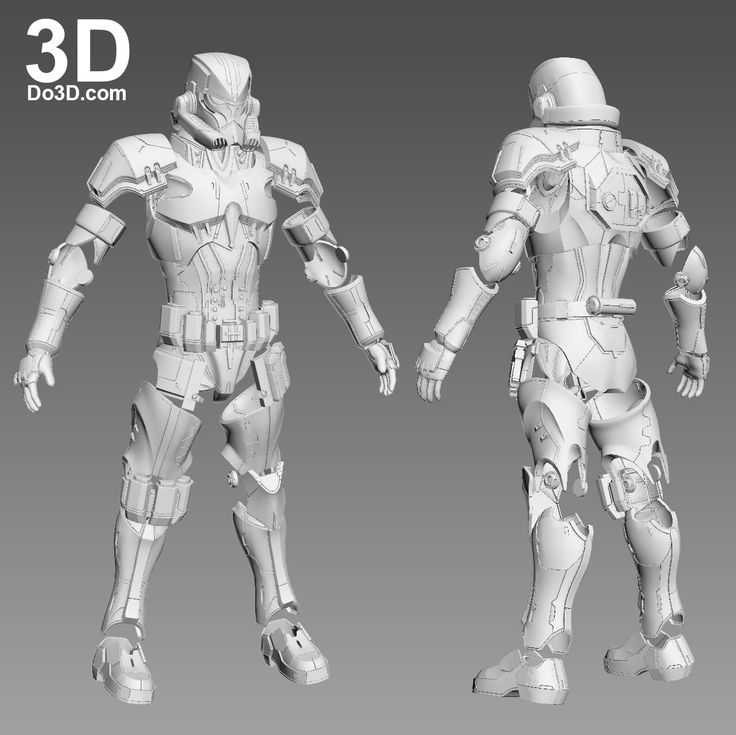
As technology improves and develops, there have been several cases of lawsuits being filed in the courts, as well as certain political developments regarding the regulation of the 3D printing industry. Our recently published book 3D Printing and Beyond explores some of the major developments in IC and 3D printing. In particular, it analyzes the issues of 3D printing in relation to areas such as copyright law, trademark law, patent law, and trade secrets (as well as some of the broader issues related to the regulation of 3D printing). In addition, the book highlights the use of open licensing mechanisms in the field of 3D printing.
3D printing and copyright law
A few years ago, there was a panic that the widespread use of 3D printing would lead to a wave of large-scale infringements of authors' rights, similar to the situation that arose with the advent of the Napster file-sharing network . Although such fears have not yet materialized, there have been various conflicts related to copyright and 3D printing. For example, Augustana College (United States) objected to 3D scanning of Michelangelo's statues, even though they were not subject to copyright protection and were clearly in the public domain. The American cable television network HBO has blocked the sale of an iPhone stand in the form of an "iron throne" from the TV series "Game of Thrones", made according to the drawings of designer Fernando Sosa using 3D printing. United States singer-songwriter Katy Perry has demanded a ban on the sale of a 3D-printed "shark on the left" figure by the same designer (nevertheless, this product subsequently reappeared in the Shapeways 3D Printing Systems catalog). The heirs of the French-American artist Marcel Duchamp opposed the production of a 3D-printed set of chess pieces based on the works of this artist.
For example, Augustana College (United States) objected to 3D scanning of Michelangelo's statues, even though they were not subject to copyright protection and were clearly in the public domain. The American cable television network HBO has blocked the sale of an iPhone stand in the form of an "iron throne" from the TV series "Game of Thrones", made according to the drawings of designer Fernando Sosa using 3D printing. United States singer-songwriter Katy Perry has demanded a ban on the sale of a 3D-printed "shark on the left" figure by the same designer (nevertheless, this product subsequently reappeared in the Shapeways 3D Printing Systems catalog). The heirs of the French-American artist Marcel Duchamp opposed the production of a 3D-printed set of chess pieces based on the works of this artist.
3D printing was also subject to the on-demand removal of content under the Digital Millennium Copyright Act (USA).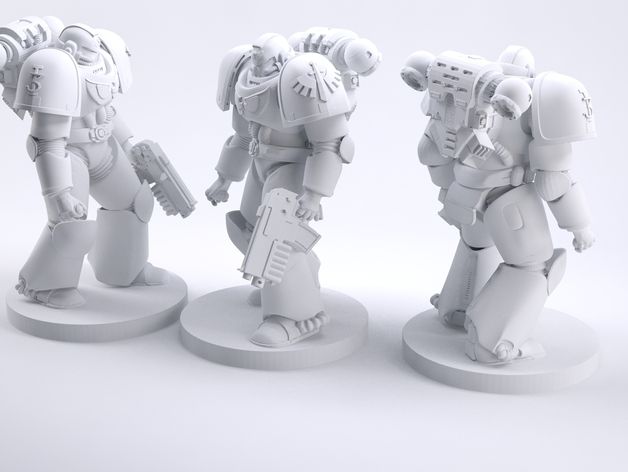 Shapeways and a number of other 3D printing firms have raised concerns about the implications of this regime for online platforms and 3D printing intermediaries.
Shapeways and a number of other 3D printing firms have raised concerns about the implications of this regime for online platforms and 3D printing intermediaries.
In addition, discussions took place on issues related to the use of technical protection measures in the context of copyright law and 3D printing. For example, the US Copyright Office has confirmed a limited technical protection exception for 3D printing stocks.
3D printing and design law
Developments in 3D printing have also raised the issue of product repair rights.
Efforts have been made across the European Union to recognize the right to repair in order to support consumer rights and develop a circular economy. In this regard, one of the important factors in achieving changes in the behavior of companies and consumers has become the European Greening Directive (Directive 2009/125/EC).
In July 2019, the United States Federal Trade Commission held a Hearing on "Can't be Repaired: A Workshop on Product Repair Restrictions.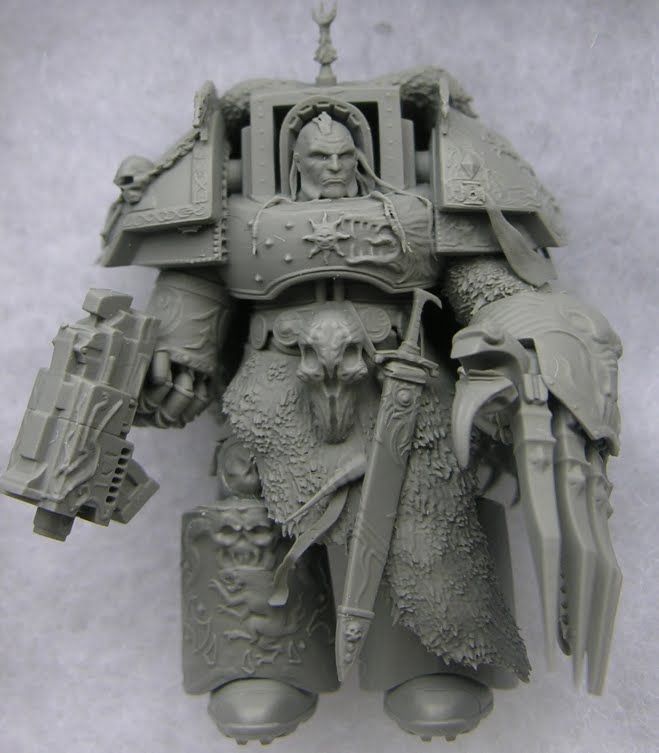 " Significant differences remain between IP owners and right-to-repair advocates in the United States. Presidential candidate Elizabeth Warren has called for legislation to secure the right to repair for the benefit of farmers in the agricultural regions of the United States.
" Significant differences remain between IP owners and right-to-repair advocates in the United States. Presidential candidate Elizabeth Warren has called for legislation to secure the right to repair for the benefit of farmers in the agricultural regions of the United States.
Significant and first-of-its-kind litigation in Australia regarding right to repair under Design Law ( GM Global Technology Operations LLC v S . . - S - Auto Parts Pty Ltd [2019] FCA 97). The Australian Treasury is considering policy options regarding the practice of sharing vehicle repair information.
Australian Capital Territory (ACT) Consumer Affairs Minister Shane Rettenbury called for recognition of the right to repair from the rostrum of the Consumer Affairs Forum, which includes ministers from both Australia and New Zealand. Federal Minister Michael Succar asked the Australian Productivity Commission to look into the matter.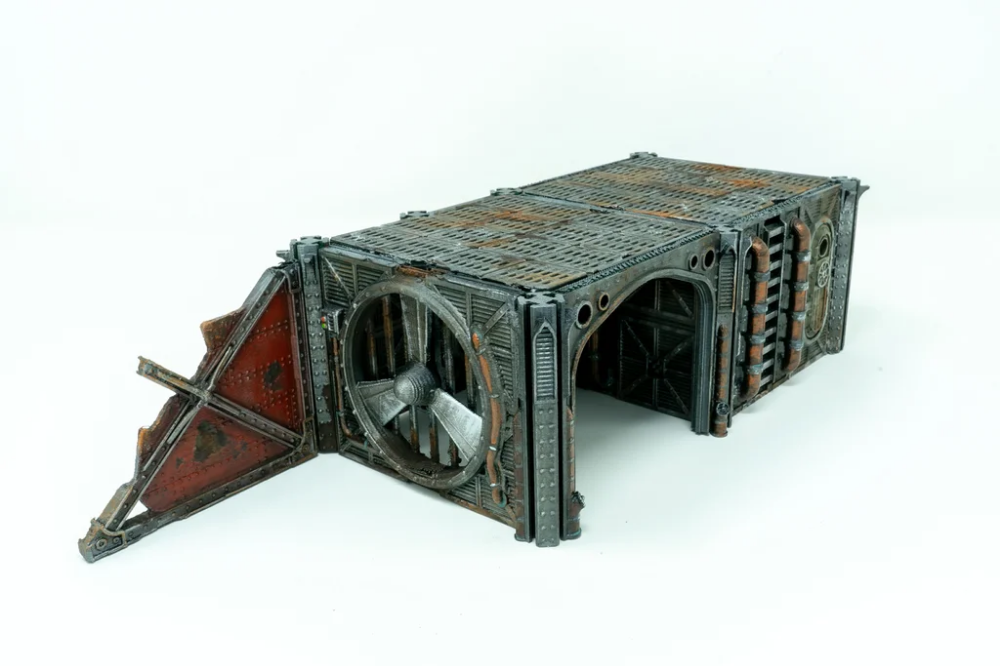
Calls for right-to-repair laws, both at the provincial and federal levels, are also being heard in Canada. As Laura Tribe, Executive Director of Open Media, noted in this regard, “We are committed to ensuring that people have the opportunity to be the real owners of the products they own.”
3D printing and trademark law
3D printing also brings uncertainty to trademark law and related legal regimes, including product substitution, identity rights, commercial use of characters, and trade dress. The legal conflict surrounding Katy Perry's trademark application for the "shark on the left" image provides some insight into some of the issues that arise in this regard.
Regarding bioprinting, Advanced Solutions Life Sciences sued Biobots Inc. Due to the alleged violation of its trademark rights ( Advanced Solutions Life Sciences , LLC V BIOBIOTS Inc 15 May 201111111111111.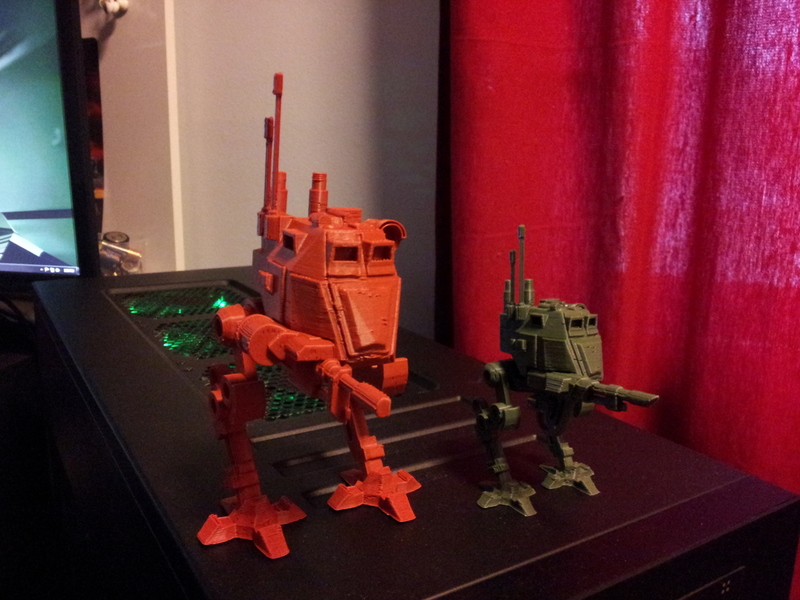 Advanced Solutions Life Sciences owns and uses the registered trademark Bioassemblybot for 3D bioprinting and tissue growth.
Advanced Solutions Life Sciences owns and uses the registered trademark Bioassemblybot for 3D bioprinting and tissue growth.
3D Printing and Patent Law
According to the 2015 WIPO Global Intellectual Property Report, Revolutionary Innovation and Economic Growth, 3D printing patent applications are on the rise. Some industrial 3D printing companies, including 3D Systems and Stratasys, have managed to build large 3D printing patent portfolios. Large industrial companies, including GE and Siemens, have also accumulated significant patent assets in 3D printing and additive manufacturing. Information technology companies, including Hewlett Packard and Autodesk, also play an important role in the 3D printing industry.
With the growing commercial importance of 3D printing in the manufacturing industry, there have been a significant number of litigations related to 3D printing of metal products. In July 2018, as part of the “Desktop Metal Inc.” v. Markforged, Inc. and Matiu Parangi (2018 Case No.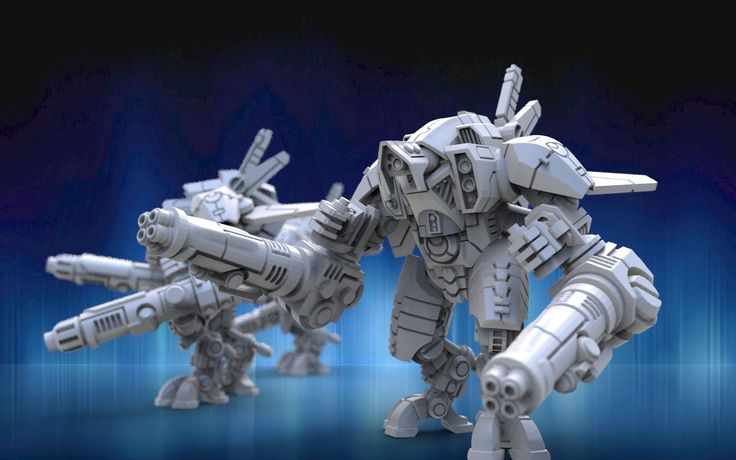 1:18-CV-10524), a federal jury found that Markforged Inc. did not infringe two patents owned by rival Desktop Metal Inc. (See Desktop Metal Inc. v. Markforged, Inc. and Matiu Parangi (2018) 2018 WL 4007724 (Massachusetts District Court, jury verdict). In this regard, the CEO of Markforged Inc. .” Greg Mark stated, “We are pleased with the jury's verdict that we have not infringed patents and that Metal X technology, which is the latest addition to the Markforged 3D printing platform, is based on our own Markforged's proprietary designs." For its part, a spokesman for Desktop Metal noted that it was "satisfied that the jury recognized the validity of all claims in both Desktop Metal patents, which were discussed in a lawsuit against the company "Markforged"
1:18-CV-10524), a federal jury found that Markforged Inc. did not infringe two patents owned by rival Desktop Metal Inc. (See Desktop Metal Inc. v. Markforged, Inc. and Matiu Parangi (2018) 2018 WL 4007724 (Massachusetts District Court, jury verdict). In this regard, the CEO of Markforged Inc. .” Greg Mark stated, “We are pleased with the jury's verdict that we have not infringed patents and that Metal X technology, which is the latest addition to the Markforged 3D printing platform, is based on our own Markforged's proprietary designs." For its part, a spokesman for Desktop Metal noted that it was "satisfied that the jury recognized the validity of all claims in both Desktop Metal patents, which were discussed in a lawsuit against the company "Markforged"
In 2018 (after the above verdict) Desktop Metal Inc. and Markforged Inc. entered into a confidential financial agreement that settled all other litigation between them. However, in 2019 Markforged Inc. filed another lawsuit against Desktop Metal Inc.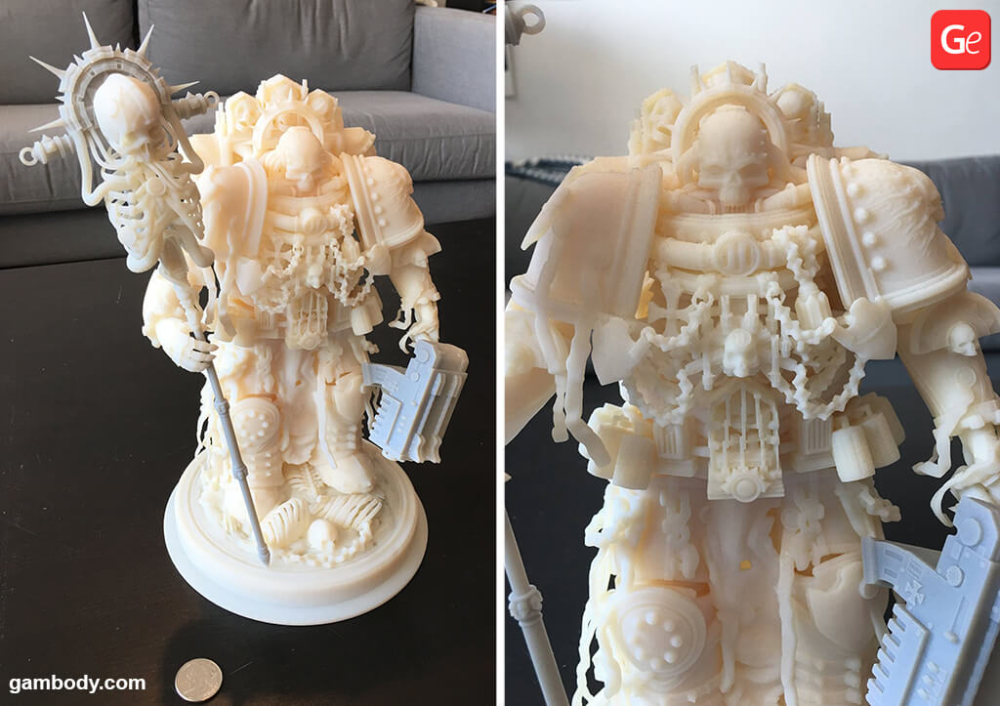 due to the fact that, according to her, the latter violated that part of the agreement, which concerned non-disclosure of negative information.
due to the fact that, according to her, the latter violated that part of the agreement, which concerned non-disclosure of negative information.
3D printing and trade secrets
In addition, the first litigation regarding 3D printing and trade secret legislation took place. In 2016, Florida-based 3D printing startup Magic Leap filed a lawsuit in federal court for the Northern District of California against two of its former employees for misappropriation of trade secret information within the meaning of Trade Secret Protection Act (“ Magic Leap Inc ." v Bradski et al (2017) case no. 5:16-cvb-02852). In early 2017, a judge granted the defendants' request to stay the case, stating that Magic Leap had failed to provide "a reasonable degree of specificity" to the disclosure of alleged trade secrets. Subsequently, the judge allowed Magic Leap to amend the text of its submission. In August 2017, the parties entered into a “confidential agreement” in connection with this issue. In 2019Mafic Leap sued the founder of Nreal for breach of contract, fraud, and unfair competition (Magic Leap Inc. v. Xu, 19-cv-03445, U.S. District Court for the Northern District of California (San Francisco)).
In 2019Mafic Leap sued the founder of Nreal for breach of contract, fraud, and unfair competition (Magic Leap Inc. v. Xu, 19-cv-03445, U.S. District Court for the Northern District of California (San Francisco)).
3D printing and open licensing
In addition to proprietary IP protections, 3D printing has a widespread practice of open licensing. Companies with a free distribution philosophy include Prusa Research (Czech Republic), Shapeways (Netherlands-US) and Ultimaker (Netherlands). Members of the Craft Movement used open licensing mechanisms to share and distribute 3D printing files. As noted in The State of the Commons 2017, the Thingiverse platform was one of the most popular platforms using Creative Commons licenses.
Other issues arising from the development of 3D printing
In addition to IP issues, the development of 3D printing also raises a number of other legal, ethical and regulatory issues.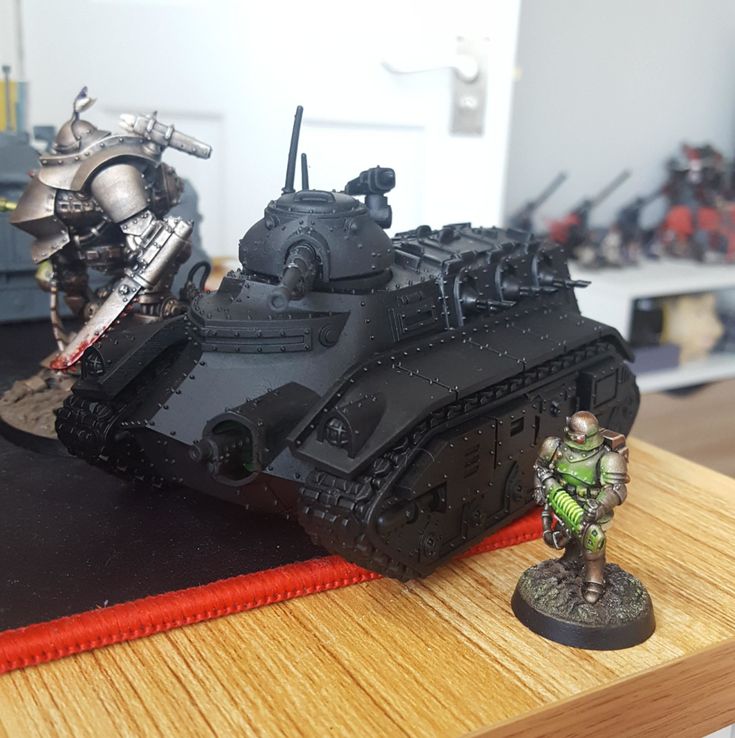 In healthcare, regulators have faced challenges with personalized medicine. The United States Food and Drug Administration and the Australian Health Products Administration held consultations on the development of a balanced set of regulations for medical 3D printing and bioprinting. The European Parliament has adopted a resolution calling for a comprehensive approach to the regulation of 3D printing.
In healthcare, regulators have faced challenges with personalized medicine. The United States Food and Drug Administration and the Australian Health Products Administration held consultations on the development of a balanced set of regulations for medical 3D printing and bioprinting. The European Parliament has adopted a resolution calling for a comprehensive approach to the regulation of 3D printing.
Litigation regarding 3D printing of firearms is also ongoing in the United States. Several state attorneys general have sued the current administration to obstruct an agreement between the federal government and Defense Distributed. Several criminal cases have been filed in Australia, the United Kingdom, the United States and Japan in connection with attempts to 3D print firearms. Legislators are debating the feasibility of criminalizing crimes related to possession of digital blueprints for 3D printed firearms.
Footnotes
* Dr. Matthew Rimmer is Head of the KTU Research Program on Intellectual Property Law and Innovation and is involved in the KTU Research Center for Electronic Media, the KTU Australian Health Law Research Center and the KTU Research Program in International Law and global governance.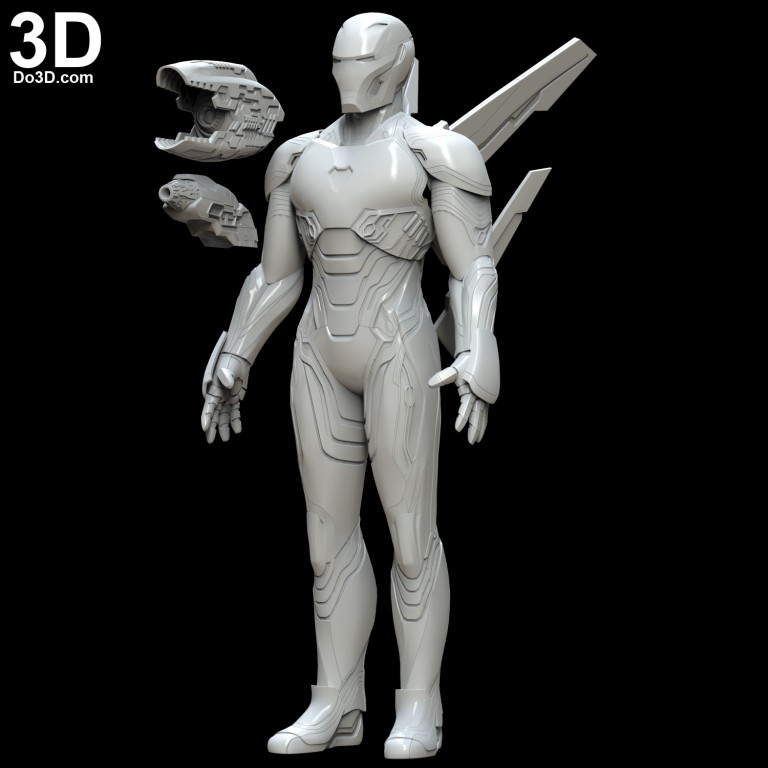 In addition, he is a Senior Research Fellow at the Australian IP and 3D Printing Research Council Innovation Project. Dr. Rimmer is the author of numerous publications on copyright and information technology, patent law and biotechnology, access to medicines, anonymous packaging of tobacco products, IP and climate change, and IP of indigenous peoples. His current research interests include IP, Creative Industries and 3D Printing; IP and Public Health; and IP and Trade, including the Trans-Pacific Partnership, the Transatlantic Trade and Investment Partnership and the Agreement on Trade in Services. His work is held in the SSRN Abstracts and Bepress Selected Works archives and funded by the Australian Research Council.
In addition, he is a Senior Research Fellow at the Australian IP and 3D Printing Research Council Innovation Project. Dr. Rimmer is the author of numerous publications on copyright and information technology, patent law and biotechnology, access to medicines, anonymous packaging of tobacco products, IP and climate change, and IP of indigenous peoples. His current research interests include IP, Creative Industries and 3D Printing; IP and Public Health; and IP and Trade, including the Trans-Pacific Partnership, the Transatlantic Trade and Investment Partnership and the Agreement on Trade in Services. His work is held in the SSRN Abstracts and Bepress Selected Works archives and funded by the Australian Research Council.
Related Links
- Read more about 3D printing and IP Litigation
3D printing - who is responsible for a defective 3D printed item?
For 3D printing, a CAD file (computer-aided design file) must be installed in the printer - a technical drawing that is read by the printer and contains a design of the object to be printed.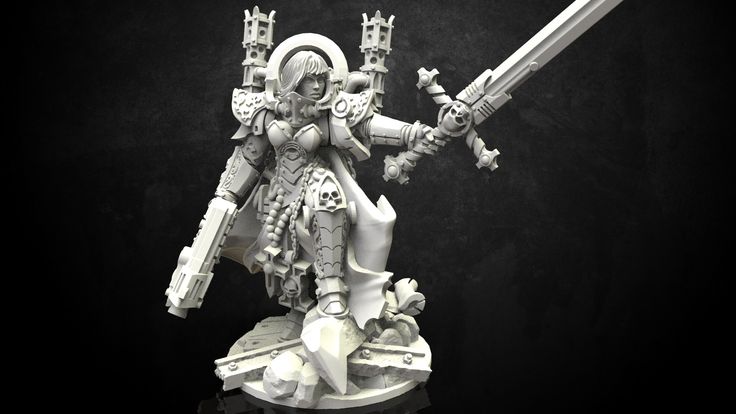
3D printing could be a revolutionary technology because it is decentralized and cheap, and in the near future everyone will be able to order 3D printing by sending a CAD file over the Internet to a 3D printing service provider. At the same time, this technology can also cause a number of problems in connection with the verification of the finished product, the possibility of counterfeiting, and risks associated with cybersecurity. From a legal point of view, the main problems are related to the protection of intellectual property rights, as well as the assessment of liability.
Since the whole process is decentralized, this means that one person can design a CAD file, another person can print it, and a third person can use the product. All of this makes it very difficult and confusing to meet security and compliance requirements from a legal standpoint.
Intellectual property rights protection
To properly address the legal issues associated with 3D printing, we must distinguish between (a) the protection of the CAD file (the result of the creative process) and (b) the protection of the finished printed product (the distribution process) . A CAD file consists of data compiled using CAD software (such as AutoCAD). They are usually in .DWG format, which can be imported into a PDF file.
A CAD file consists of data compiled using CAD software (such as AutoCAD). They are usually in .DWG format, which can be imported into a PDF file.
The data cannot be protected by the Copyright Act, only by trade secret protection. In Europe, software protection is provided by copyright. Copyright owner, i.e. the creator can always protect his rights in a way that suits him. The issue of extending copyright protection in relation to a CAD file is questionable if it is not related to artistic creation. Still, the CAD file can be protected by the database sui generis if it can be shown that the collection of the applied data set required significant effort.
During the distribution process, if the physical object is already printed and ready for distribution, the legal approach is different from the analysis applied to the CAD. In this case, copyright protection is no longer valid, and industrial property rights such as patents and design protection provide the most effective protection.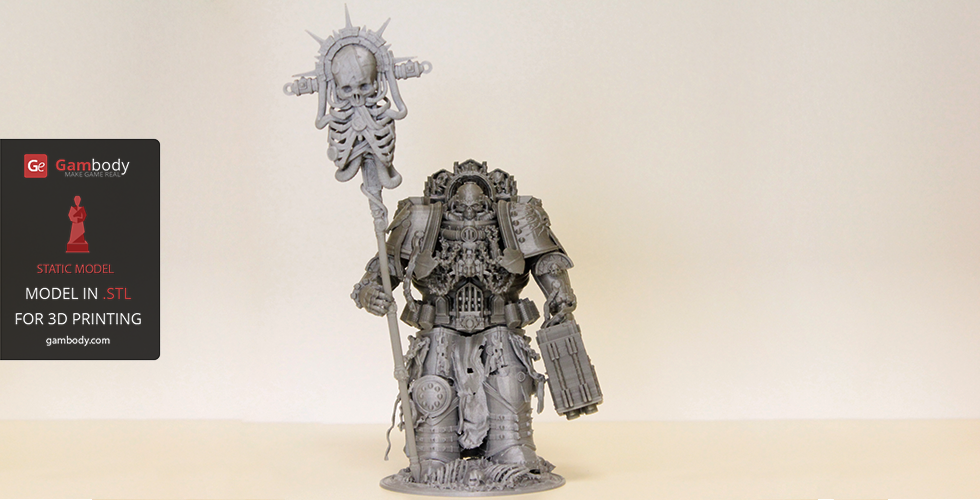 Why is this happening? The actual creator of the printed object cannot be the person who orders the machine to print. The creator is the person who created the design/project contained in the CAD file. In the event that a designer/creator wants to extend protection to all creativity and dissemination, this can only be done through a patent or design protection.
Why is this happening? The actual creator of the printed object cannot be the person who orders the machine to print. The creator is the person who created the design/project contained in the CAD file. In the event that a designer/creator wants to extend protection to all creativity and dissemination, this can only be done through a patent or design protection.
Once all the requirements for patent protection have been met (technical development, innovativeness, level of invention and industrial applicability), the entire process can be patented in the name of its creator, i.e. in this case, the inventor. It is important to note that it is not possible to patent software as such in Europe. The possibility of patenting the functional characteristics of the software is determined by the presence of a technical innovation - the technical level must be different from the current technical level.
The second option for protecting printed objects is design protection, which prevents others from copying a product with the same shape and configuration.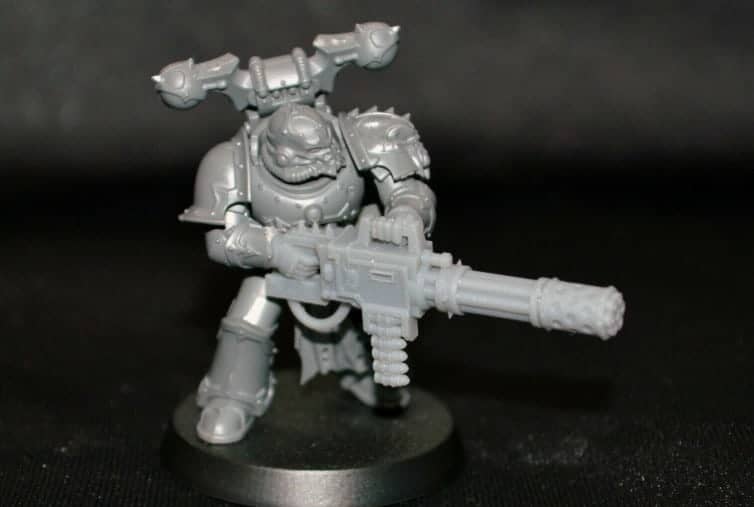 For more effective protection, it is important to register the rights to the design.
For more effective protection, it is important to register the rights to the design.
This means that the legal rules associated with 3D printing existed long before the possibility of 3D printing, and they apply to and protect the entire manufacturing process. All legal aspects related to intellectual and industrial property in Europe are suitable for the regulation of such technology. However, the most serious problem is that in each case the solutions are different. For this reason, it is always necessary to analyze each case individually in order to be sure of the rights of the creator/owner/inventor/designer.
Considering all the variables associated with 3D printing rights, it is recommended to take all possible preventive measures so that any individual case can be predicted. In this regard, it is important when licensing rights to have clear, binding terms and a license agreement that will help regulate the resolution of disputes arising in connection with 3D printing.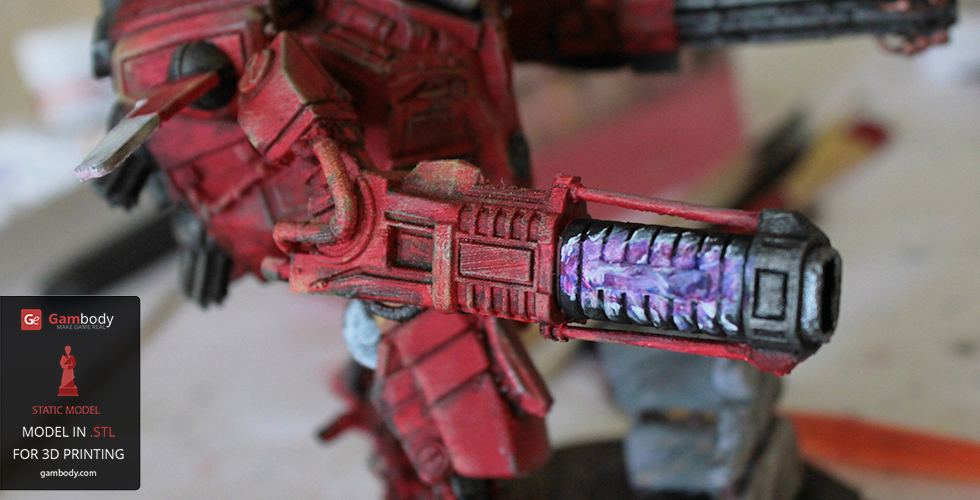 In this way, for example, liability can be waived from the creator of the CAD file.
In this way, for example, liability can be waived from the creator of the CAD file.
Consumer Protection
In the case of privately owned 3D printers, there may be a defect liability and/or product warranty issue as between the creator of the CAD file and the end user, there is no manufacturer that could act as an intermediary. This can have serious implications for consumer protection.
Who is responsible for a defective finished product? In a situation where the object was printed at home, the fault may lie with: a) the creator of the CAD file; b) a 3D printer seller; or c) a print material seller. If one of them is a legal entity, the consumer protection authority can help the consumer and hold accountable those responsible for the marriage of the product. If the seller of the defective product is an individual, it will be much more difficult for the consumer to prove that the defect arose at a particular stage.
The second problem that concerns consumers of 3D printing technology is that when they use the goods and services offered by companies, the conditions for their use are always set in advance and cannot be changed.